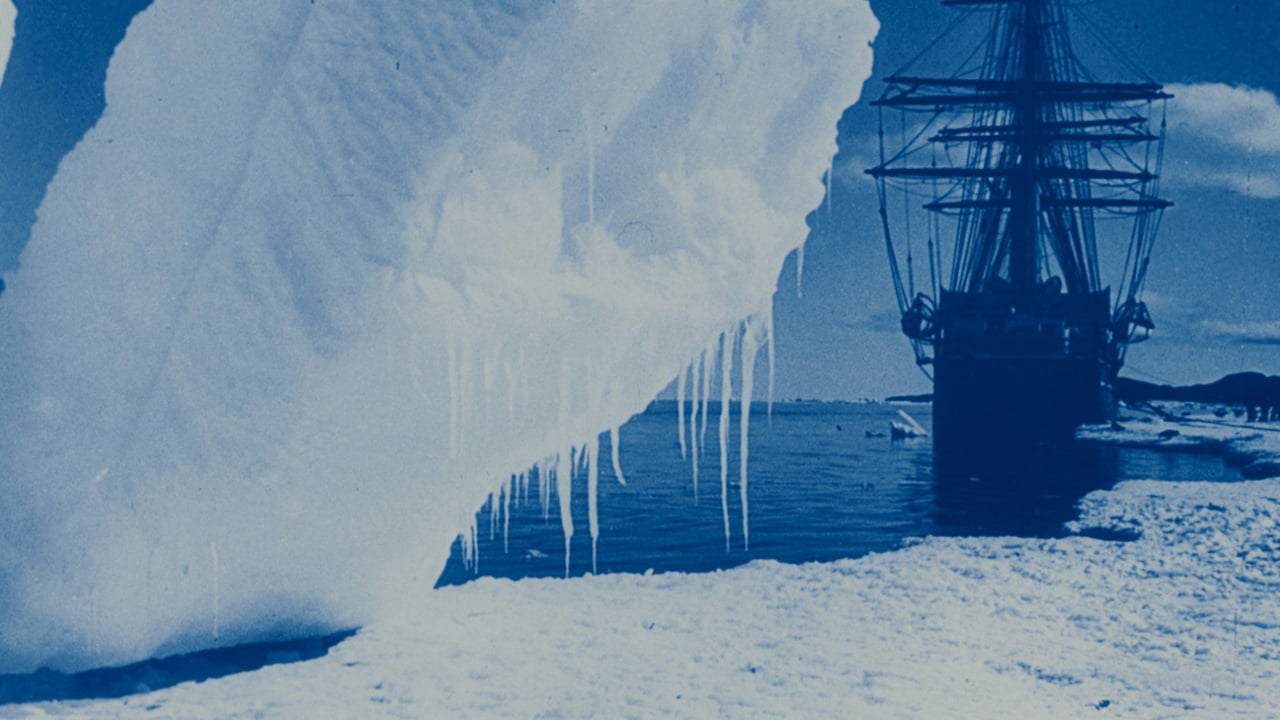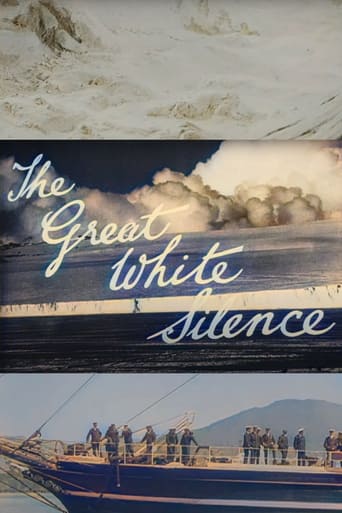NekoHomey
Purely Joyful Movie!
BroadcastChic
Excellent, a Must See
DipitySkillful
an ambitious but ultimately ineffective debut endeavor.
Hadrina
The movie's neither hopeful in contrived ways, nor hopeless in different contrived ways. Somehow it manages to be wonderful
thinbeach
A documentary about the quest to the south pole, where oddly, the best parts are less about the quest, than about the sideshows: The dancing of crew on board the ship is highly entertaining, while the observation of animal life in the Antarctic can be as cute and humorous and informative as later documentaries devoted just to those subjects.The photography of the landscape scenery is so beautiful that the first half of this film or so is worth watching for that alone, but unfortunately it falls away just as the climax begins because they couldn't get any footage of it. What we are left with then is a third act filled mostly with title cards - like reading a book - and while interesting subject matter, and the impossibility of filming the task completely understandable, lessens the filmgoing experience.
Jackson Booth-Millard
This silent film was one featured near the beginning of the book 1001 Movies You Must See Before You Die, I didn't know what to expect from reading the title, but it sounded like a worthwhile thing to watch. Basically this is a silent documentary about the Terra Nova Expedition, where the British made an effort to plant the British union jack flag on the South Pole, using a group of men, horses (ponies), dogs and primitive snowmobiles hauling sledges. The expedition started from a base located on the Antarctic coastline, all footage was captured at the time of the event, expedition leader was Robert Falcon Scott, he and his men left from New Zealand and sailed into the Southern OCeon and its ice floes. They safely landed on the icy coastline of Ross Island, filmmaker Herbert G. Ponting followed the men setting up tents, practising skiing and preparing to travel southward toward the Pole. The film ends with the explorers pushing off from their base, but title cards remind the viewer that this story has a tragic conclusion, Scott and the four companions never returned from the Pole, but they said that they would die trying to do what man had never done before. This film is interesting with all the footage of the men going through the many icy landscapes and waters, you also see good footage of the wildlife, including killer whales, seals and penguins, but what is really fascinating to watch is the icebergs and other strange ice structures on the journey, it is a worthwhile silent documentary. Very good!
basilisksamuk
I'd like to be able to say this was a great film but in all honesty I can't. At least half of it is taken up by Ponting anthropomorphising about the animals he filmed. Scott's push for the pole and tragic end are depicted from footage by Ponting but he did not go with them so it isn't any better than modern reconstructions in documentaries. The best bits are the contemporary footage of the early preparations and passage to Antarctica. The choice of music for the soundtrack is pretty dire – the Vaughn Williams score for the John Mills film would have been predictable but would have been better. This is the film as released in 1924 and as such is an important historical artefact so I shouldn't complain too much. However, a better treatment would be to use the best material in a documentary and release it on DVD/Blu-Ray with the full original as bonus material for those who really want to see the whole thing. As a viewing experience for a modern audience it's pretty dull and doesn't tell you what you really want to know.
dipsy-lee54
This film is a true inspiration. The level of patience and care that has gone into capturing these stunning images in the frozen wastes of the Antarctic, way back in the early days of cinematography - 1912, is amazing.It's beautifully shot and edited, (recently cleaned up for the BFI), with a suitable score which gives the film a playful tone- especially as Ponting spends time following the penguins, which was comical.Towards the end the film becomes much more emotional and by this point you truly realise the scale of the expedition, the sacrifices made and how brave Captain Scott, the explorers and Ponting with his camera were to undertake such a daring journey.

